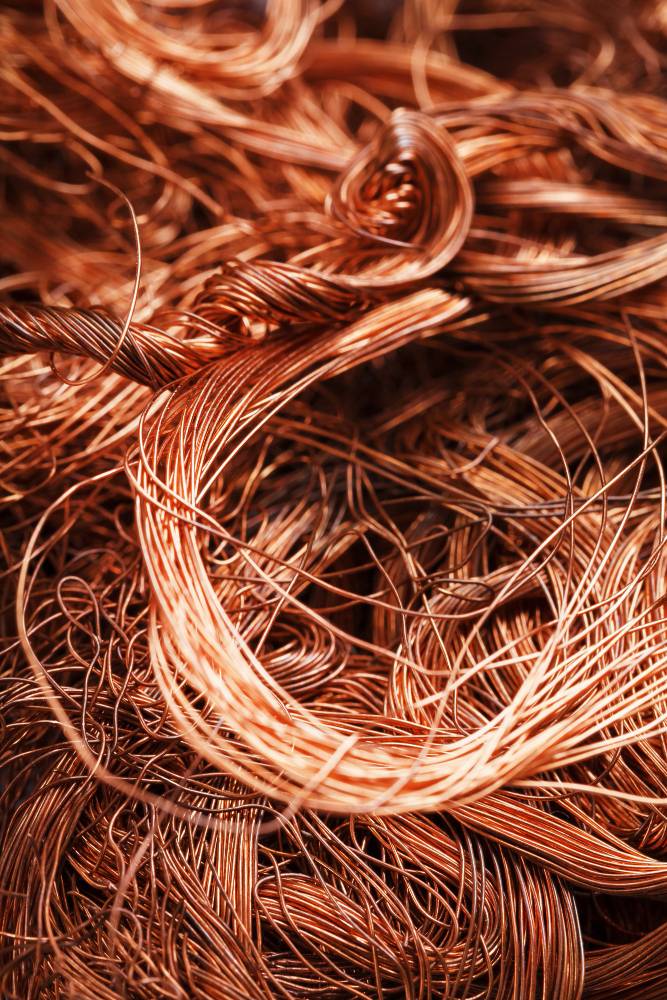For dumpster, container, and large loads please call
For dumpster, container, and large loads please call

Copper is always in demand in any scrap yard, because it’s one of the most valuable and versatile metals in the recycling world. It’s used across industries from construction to electronics, but not all copper is the same. Whether you're pulling wire from an old house, salvaging plumbing from a demo, or wondering how to get the best price per pound, it’s important to know about copper grades. M&M Recycle helps local customers make sense of their materials and earn more for their efforts. If you’re serious about scrap metal recycling, keep reading to learn about the difference between the most common types of copper you’ll come across.
Copper’s value is closely tied to its purity. The cleaner it is, the easier it is to melt down and reuse, so that’s why most scrap yards offer tiered pricing. A scrap metal company depends on these categories to keep the system efficient and fair. Small differences in prep can lead to big differences in payouts. Sorting your copper correctly can add hundreds of dollars to a large load. It also saves time on-site and builds trust between buyer and seller.
If you’re holding bare bright copper, you’re holding onto the highest quality. This is the cleanest and most valuable form of copper scrap. It’s made up of solid, uncoated, unalloyed copper wire that is at least 99% pure and thicker than 16 gauge. No paint, insulation, solder, or corrosion. Electricians and contractors can end up with bare bright after stripping wire that’s pulled from residential or commercial job sites. It’s easy to spot because it’s shiny, reddish-orange, and flexible. If it looks clean enough to reflect light and you can see the copper color without any trace of tarnish or coating, you’re likely dealing with bare bright. Because it commands the highest price of all copper grades, scrap metal buyers look closely at the condition. Even a small amount of paint or oxidation will bump it down a grade. So if you’re in the habit of stripping wire, take the extra step to make sure it’s spotless.
Right behind bare bright is #1 copper. This category includes pipe, tubing, or thick wire that is unalloyed, uncoated, and free of attachments. It’s still clean, but it doesn’t have to be quite as perfect. This category includes stripped copper that’s lost a bit of its luster or pipe that has darkened slightly over time, as long as it’s not corroded or painted. #1 copper might also come from industrial machinery or HVAC systems. If it’s solid copper and clean-cut, with no solder or fittings attached, it likely qualifies. The price for #1 copper is slightly lower than bare bright, but still well above other grades.
#2 copper is where most copper ends up after a little wear and tear. It includes pipe and wire that may have a bit of solder, oxidation, or coating. If the copper isn’t bright and shiny or it has joints, fittings, or paint, it probably gets classified as #2. This category is common in residential plumbing, older boilers, and some electrical systems. It can also include wire that hasn’t been stripped, like insulated copper wire, especially if the insulation is too tight or time-consuming to remove. While #2 copper doesn’t fetch top dollar, it’s still a valuable scrap category and far from worthless.
Insulated copper wire is copper that’s encased in a plastic or rubber coating. Since the copper isn’t visible, it takes experience or a good stripping machine to tell what’s inside. This category is broken into several subtypes based on copper content:
Prices vary widely, so it’s worth testing a sample by stripping a few inches to show your scrap metal buyer. Or better yet, strip it all if you’ve got the time and tools because clean wire nearly always sells for more. In many cases, bare bright or #1 copper can be reclaimed from insulated wire with just a little effort.
Copper also shows up in many alloys like brass, bronze, and cupronickel, to name a few. These are valuable in their own right but aren’t usually classified under the standard copper grades. Brass is copper mixed with zinc and can be found in plumbing fixtures, keys, and some hardware. Bronze adds tin to the copper and is common in sculptures, marine fittings, and some musical instruments. Cupronickel is a mix of copper and nickel, and is found in coinage and some industrial uses. While these materials are not sold as “copper” per se, they do carry value and are welcomed at most scrap yards. Just don’t expect brass to fetch the same price as #1 copper.
Not every yard grades fairly, and slight misunderstandings can cost you. M&M Recycle is a local scrap metal company that believes in forging strong community ties. Bring your copper to our crew today.
Our buyers are trained to determine value honestly and explain why a load is sorted one way versus another. Being transparent builds long-term relationships with local scrappers, contractors, and homeowners. We’re ready to answer questions and offer support in any way we can.